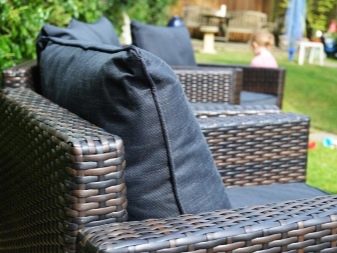All about water repellent fabrics
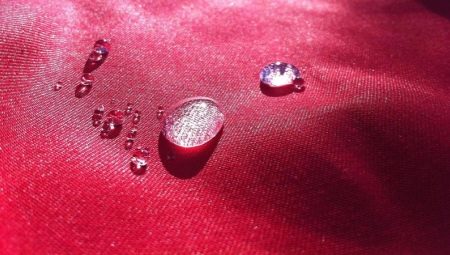
Convenience, comfort, reliability - all this is about water-repellent fabrics that protect a person and the world around him from adverse natural factors, solving many everyday problems associated with the need to protect against moisture penetration.
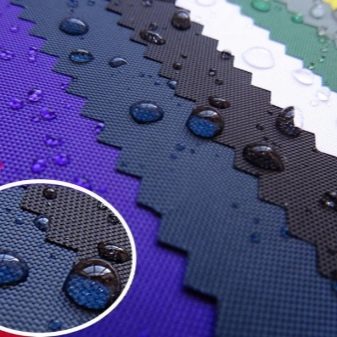
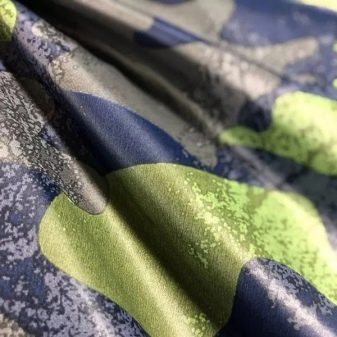
general description
Compared to other fabrics, waterproof fabrics have a specific manufacturing technology and are endowed with certain advantages:
- the diagonal weave of the fibers creates an excellent water-repellent effect;
- the sliding surface has an extreme density, due to which moisture is not absorbed, but rolls down freely;
- color fastness, increased wear resistance, durability, versatility of use.
Waterproof fabrics usually contain polyester, nylon and other synthetic materials. Sometimes natural fibers are added: cotton and linen.
Waterproofness is achieved in several ways. It is obtained using:
- impregnation with polyurethane;
- applying a mixture of rubber and gasoline (rubberizing);
- additional film coating (membrane).
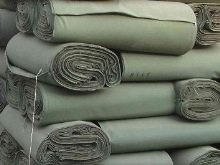
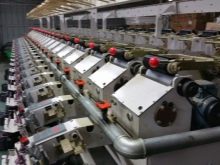
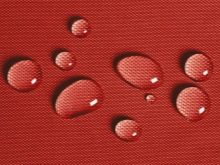
Recently, lacquered eco-leather has become very popular, in which a knitted or nylon fabric is covered with a layer of latex. As a result, lightweight, bright fabrics acquire a skin-like appearance. Qualitative characteristics depend not only on the composition of the threads, but also on the type of weave. The most reliable waterproof fabrics are considered to be twill weave fabrics with special scars. The main thing that can spoil such a durable material is mechanical punctures and cracking from severe frosts. It is impossible to eliminate such a defect using sewing, since needle punctures will become a place for moisture to penetrate.
Products are cleaned with soft sponges, water and soap solutions. It is possible to wash in machines at a temperature not exceeding 40 degrees using the function of a manual or other gentle mode.
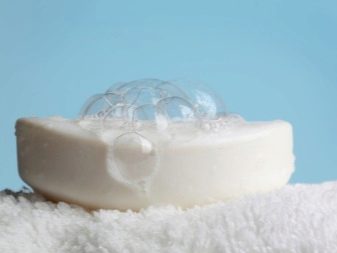

Views
The technology of textile production is constantly being improved in accordance with the needs of consumers. Striving for the comfort of clothing and increasing requirements for the long-term preservation of decorative household solutions leads to the improvement of such a necessary waterproof fabric.
According to the method of achieving a water-repellent effect, waterproof fabrics can be:
- impregnated;
- rubberized;
- membrane (from two and three layers).
Hydrophobic impregnation is made on a polymer basis. Sometimes the products are covered from the wrong side with the thinnest polyurethane layer. According to their functional characteristics, impregnations are water-repellent (WR, PU, DuPont, PD), dirt-repellent (GRU, MVO, NMVO), and biocidal (Bio, AMO, PGO, AGO, PAO).
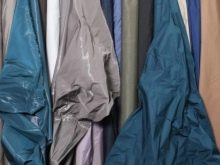
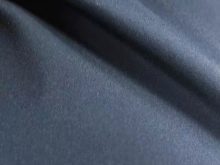

Varieties of water-repellent impregnations differ in the method of application and composition. Dirt-repellent protects against various oil and water penetration. Biocidal prevent the development of molds and other harmful microorganisms.
In the manufacture of rubberized materials, the production technology includes several stages:
- applying a rubber-gasoline mixture to the canvas;
- heating the canvas, during which gasoline evaporates;
- vulcanization, when rubber and sulfur form foamed rubber under the influence of high temperatures.
The rubberized fabric has a long service life. Due to its high density, it does not stretch or deform. In order to prevent the color from fading from ultraviolet rays, yellow, white or green paint is added to the rubber layer during production, which absorbs the short-wavelength spectrum.
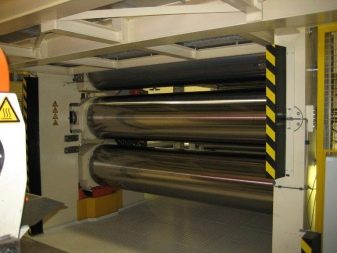
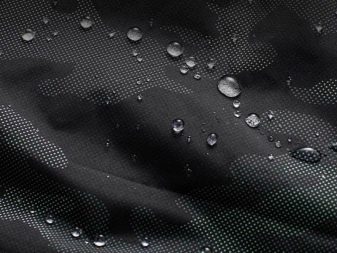
The membrane is the result of the latest innovative technologies, which guarantees absolute protection against through wind and moisture. Consists of a synthetic base with a sprayed transparent polymeric porous mesh. The thinnest film is attached to the main panel. By preventing moisture from penetrating inside, it allows the liquid to evaporate. The body in such clothes breathes freely. The membrane can be either porous, with numerous pore holes, or impermeable.
Most often, a two-layer structure is used, when a water-repellent gasket is placed on the inside of the canvas, secured by a lining. The three-layer membrane has a mesh lining that is laminated to other layers. Special uniforms for rescuers, equipment for skiers are sewn from the membrane. Membrane fabric is the most stable barrier against bad weather, it is also valuable for its ability to keep warm.
It has only one drawback - a high price in comparison with cheaper materials.
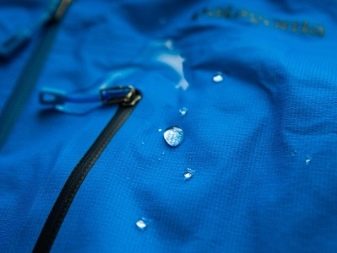
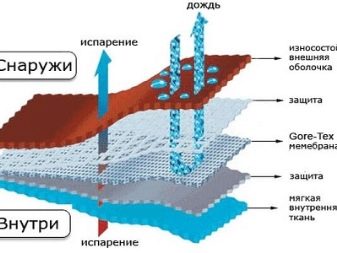
The most popular waterproof fabrics are as follows.
- Taffeta. Soft, dense polyester and nylon fabric covered with a thin protective film on the seamy side. It absorbs vapors well, does not deteriorate from water, does not change color, does not deform during washing. Taffeta comes in different thicknesses. Thin is commonly used as a decorative and lining material. The windproof structure of the fabric is ideal for use in winter outerwear, tents, sports bags and shoe tops.
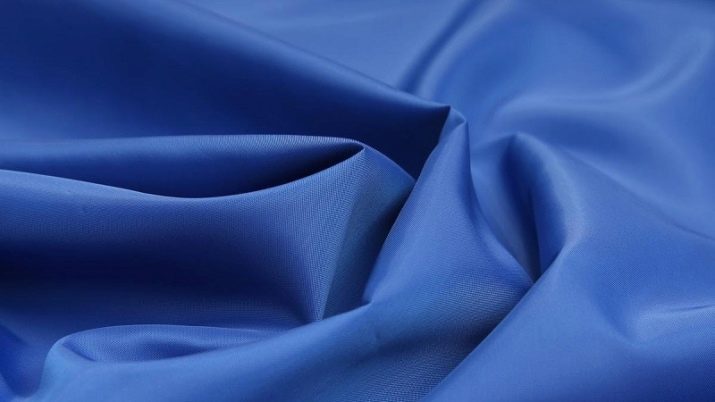
- Taslan. Polyamide with rep weaving of threads, forming a specific scar. Milky special impregnation protects against dirt and moisture. Breathable structure wicks sweat out unhindered. The material is very often used for sewing jackets, it is highly appreciated by parents. A child in products made of this fabric is warm, comfortable to move, and not afraid to get dirty. Windbreakers, overalls, raincoats are sewn from taslan.
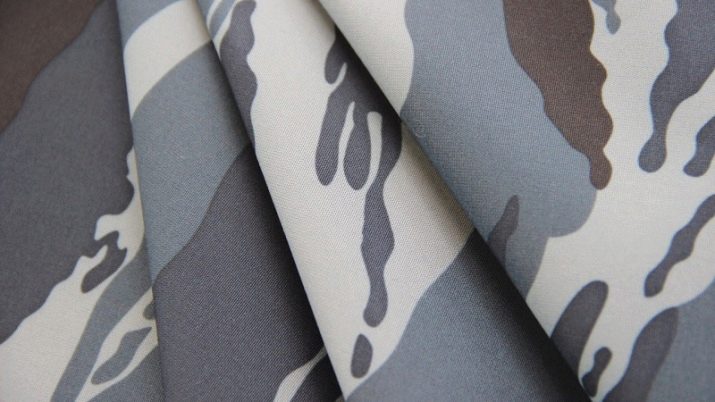
- Oxford. Rough and extremely durable fabric with a weaving "matting" has a high degree of protection against chemical attack. It is distinguished by its durability and heat resistance. However, you should be aware that fabric reacts negatively to high temperatures, melts easily from an open flame and loses its shape when exposed to high temperatures. Therefore, you should not bask near the fire in clothes made from this type of fabric. Even drying on a hot battery can ruin the product.

- Duspo. The elastic matte texture gives the products a solid look. It contains polyamide fibers. Paint and color printing are very high quality. According to its characteristics, it is ideal for use in children's clothing.
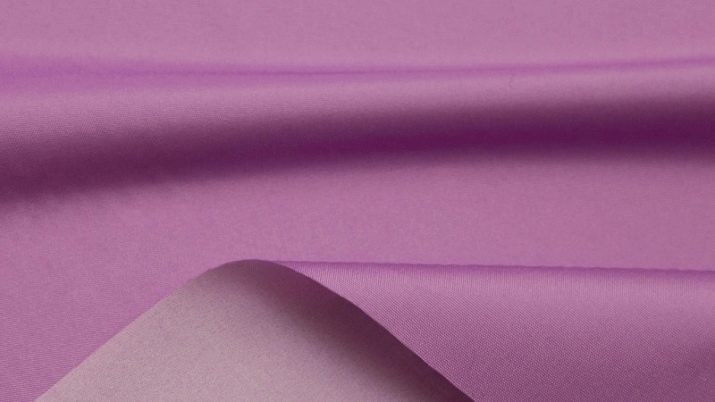
- Acrylic. A combination of natural and synthetic fibers. It protects well in the cold season, has high strength, good resistance to moisture and dirt.
It is most often used in upholstery for outdoor furniture, creating a cozy decor that is not afraid of pollution, rain, snow, or accidentally spilled liquids.
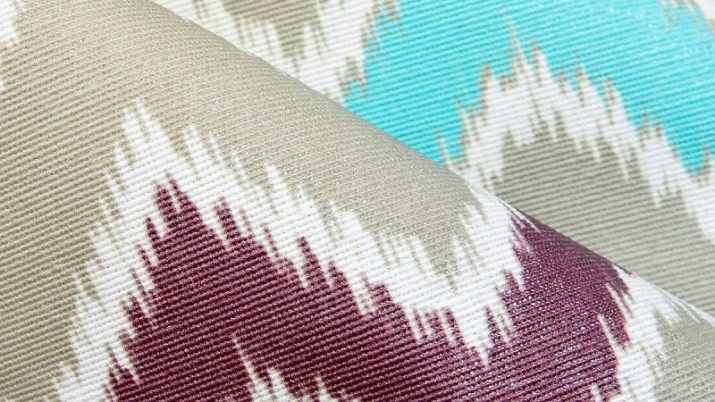
- Tyvek. Lightweight waterproof fabric is formed by the formation of continuous bundles of polyethylene fibers, which, under the influence of heat and pressure, are formed into a single fabric. Does not emit lint, forms a flawlessly smooth opaque surface. Tyvek includes the properties of film, paper and fabric, therefore it is widely used in various fields. Great for making tents, tents, car covers.

- Alova. One of the latest innovative developments of Chinese scientists belongs to the category of membrane polyester fabrics. Ideally protects against adverse influences.
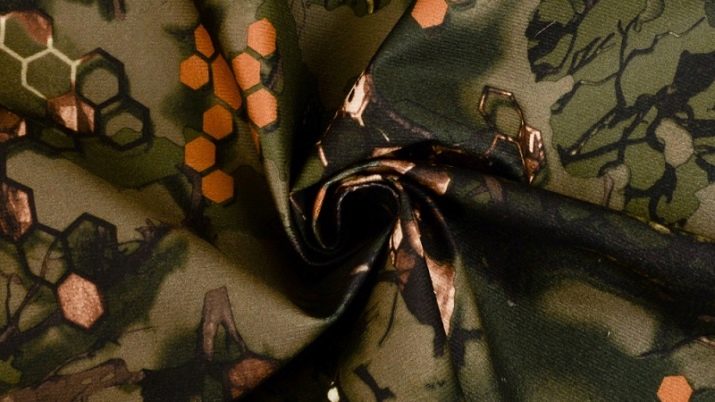
- Tarpaulin. A fabric with a hydrophobic membrane, where the thinnest polyurethane or Teflon layer is so stretched that it breaks down into individual fibers, among which pores are formed. The fabric is treated with waterproof and anti-decay agents. Protects against water, high temperatures, mechanical stress, and is resistant to decay and fungal infections.

Applications
Waterproof fabrics have a wide range of applications. They are used for multifunctional clothing, bedding, and are widely used in outdoor decor.
For clothes
Garments are usually made from materials such as polyester or nylon. Thanks to special impregnation, these materials are easily cleaned of dirt, they are not afraid of abrasion and mechanical stress. Clothes made from such fabrics are light and elastic. Oxford jacket fabric is especially popular. From it they sew a variety of clothes for children and sports assortment, equipment for active recreation.
It is also practical for sewing bags; excellent curtains for the bathroom are obtained from it. It is most often used for sewing pants and jackets. Children, fishermen, hunters, skiers are the most active consumers of clothing that is not afraid of moisture. Especially for warm clothes, a double water-repellent fabric is made with a knitted layer inside.
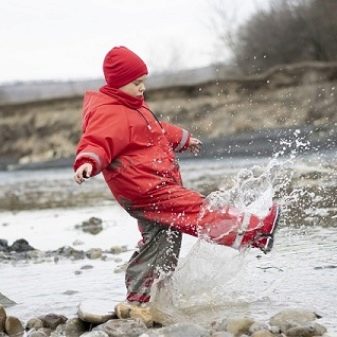
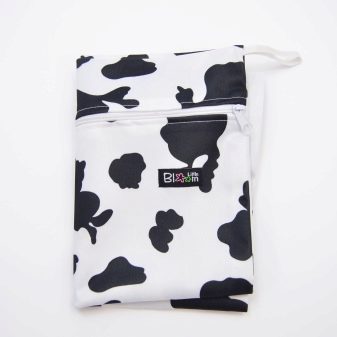
For sheets
Waterproof sheets are usually purchased for the smallest consumers, so their technological properties are designed for contact with baby's sensitive skin. Waterproof bedding is also used in medicine when caring for bedridden patients.
3 types of fabrics are used for bedding:
- with cotton;
- with terry;
- with polyurethane membrane.
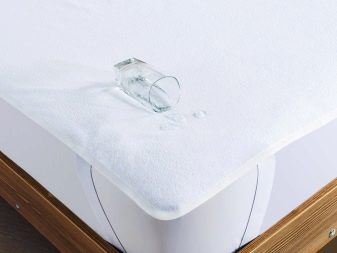

The outer side of the cotton-backed bed sheet is similar to a normal natural cotton baby diaper. Such underwear is absolutely safe for children and people with hypersensitivity and allergic reactions. The sheets create good air circulation and are highly hygroscopic. Products made of soft and delicate terry, consisting of natural cotton, are very pleasant to the touch and perfectly retain liquid.
As a rule, they are used at low ambient temperatures, since they have high heat-saving qualities. There are two-sided models: with summer and winter use.
High-quality indicators are demonstrated by bedding fabrics with a polyurethane membrane. This hypoallergenic material does not contact the skin, absorbs any liquid and keeps you dry.
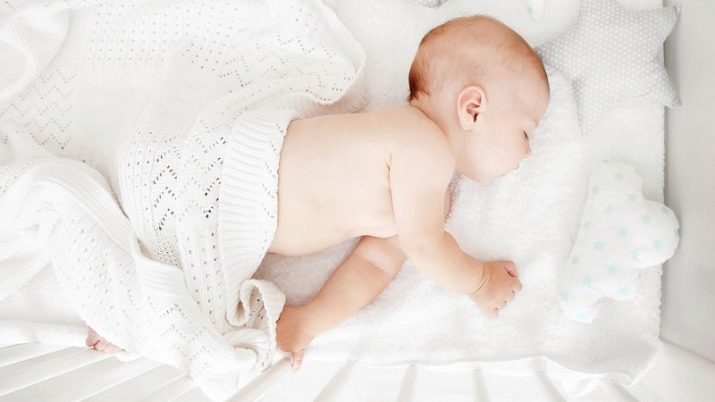
For covers
Jordan is the most popular fabric for covers. It has a thick surface with a special sheen and low gloss. Soft and tactilely delicate fabric is characterized by increased dimensional stability: it does not stretch and does not shrink after washing. It is also used for mattress toppers, pillow covers used outdoors: in gazebos, under sheds for recreation, on yachts and boats, convertibles.
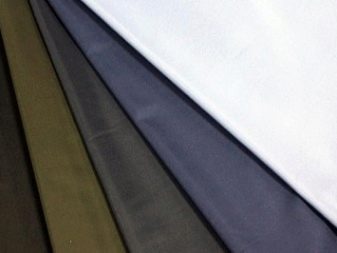
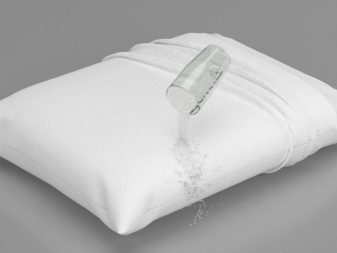
For outdoor furniture
Waterproof canvases are widely used both on personal backyards and in public places: in hotels, restaurants, recreation areas, large shopping centers. They are used for upholstery of outdoor furniture: armchairs, sofas, poufs, sun loungers. They are ideal for garden swings, UV and rain umbrellas. Of these, curtains are sewn on open verandas or for French windows, which are permanently open.
Acrylic fabrics are in the greatest demand. They are visually and tactilely pleasing, very much like natural fibers. Outdoor upholstery comes in many varieties to suit every taste and price. In the public domain, custom-made logo water-repellent fabrics that include symbolic elements of an object using such upholstered furniture are especially popular. This fabric is used not only for outdoor use, but it is also suitable for indoor use. There are waterproof fabrics in almost every home.
Careful use and proper care of products made from this versatile fabric will allow the wearer to be protected from wind and rain for a long time.
